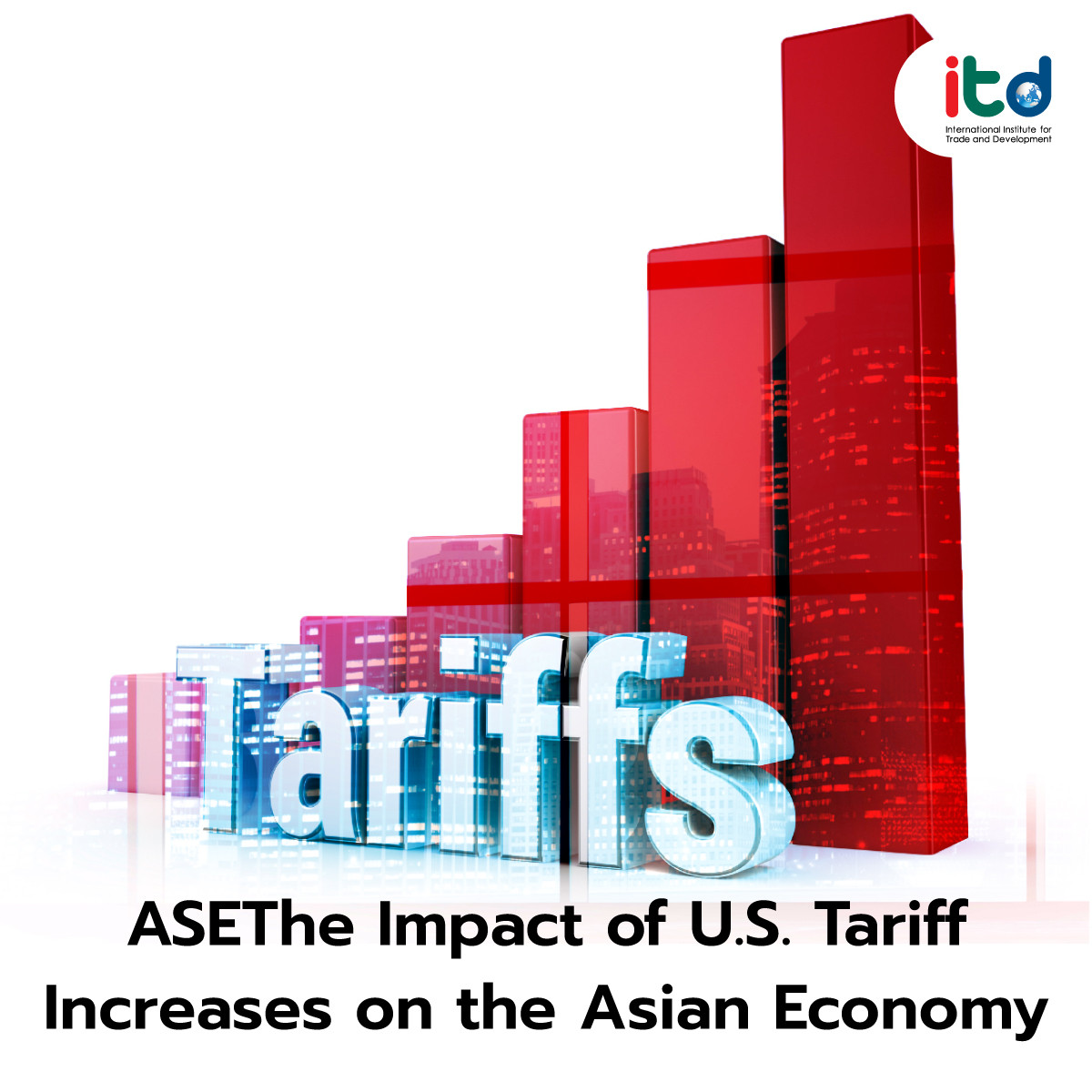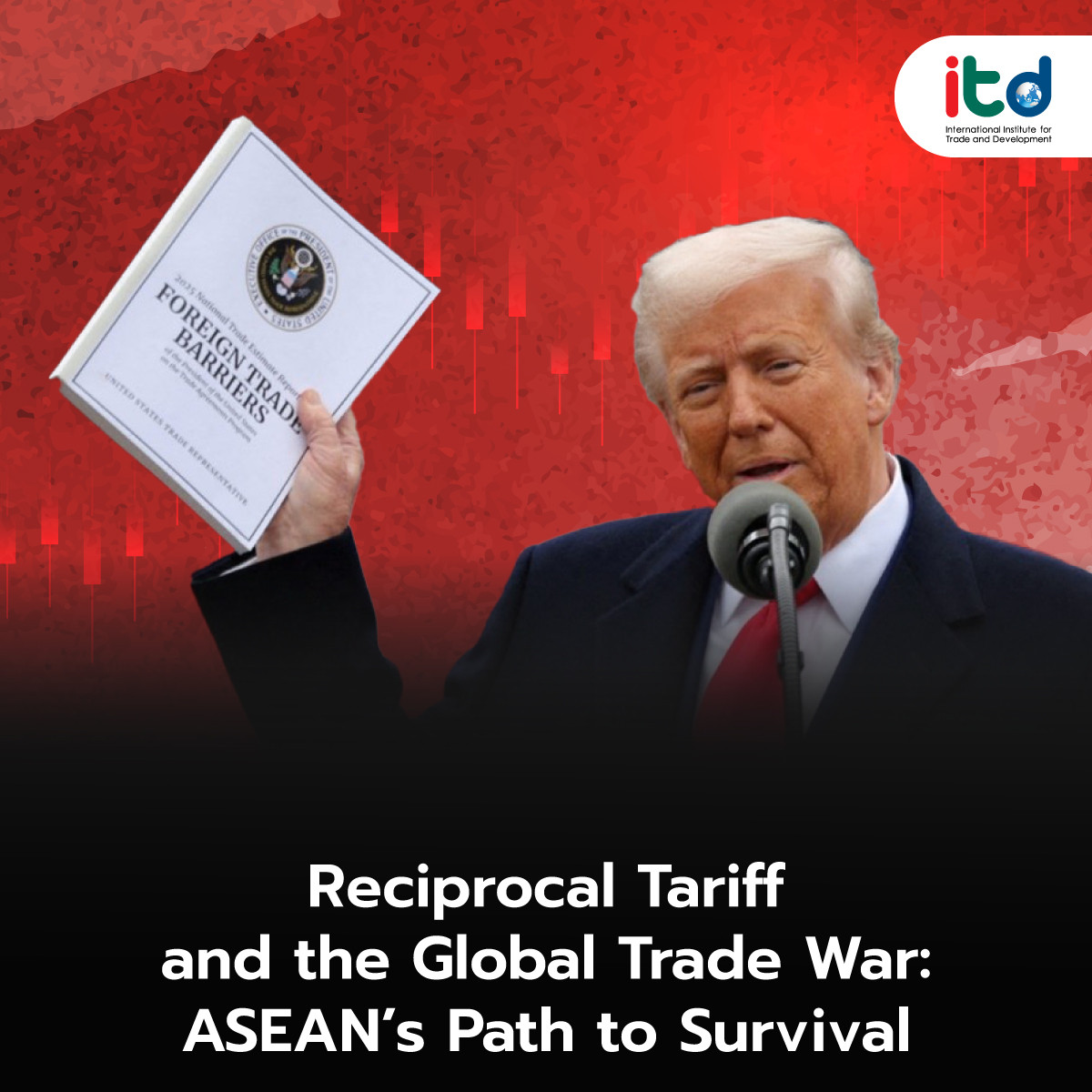About Documents
The Asian Development Bank (ADB) published its Summary Report No. 332 on the impact of the United States’ tariff policies on the Asian economy. The analysis was conducted using the Global Trade Analysis Project (GTAP) model, a widely used the Computable General Equilibrium Model (CGE) for analyzing international economic policies. The study considered scenarios involving unilateral U.S. tariff increases and retaliatory measures by U.S. trading partners.
The scenarios studied include: (1) Unilateral U.S. tariff increases of 10%-20% on all countries and a 60% tariff on imports from China. (2) Retaliatory tariff measures by trading partners at rates equivalent to the U.S. tariff hikes. The countries analyzed include China, Japan, South Korea, Thailand, Vietnam, and other ASEAN nations, as well as other trading partners such as the European Union, Canada, and Mexico.
The main objective of the U.S. tariff policy is to reduce the trade deficit by lowering imports, thereby improving the U.S. trade balance. However, these policies negatively affect trading partners in Asia. The study found that imposing a 60% tariff could reduce the trade balance between the U.S. and China by up to 24% during 2025-2028. Other Asian countries may also face negative impacts due to decreased exports to the U.S.
Some countries, however, can mitigate the effects by redirecting their exports to other regions, such as Europe and Canada. For Thailand, the overall impact on its trade balance appears minimal but depends on tariff rates and retaliatory measures from other trading partners.
Impact on Nominal Income
The study found that the U.S.’ nominal income might initially increase due to higher tariff revenues. However, in scenarios where trading partners impose retaliatory tariffs, U.S. income could decrease by as much as 6%. The report highlights that while higher tariffs initially boost government revenues, reduced economic growth and production revenue ultimately diminish these benefits.
For China, nominal income declines in all scenarios due to reduced production activities. Thailand and Vietnam might experience income reductions in cases of unilateral U.S. tariff hikes but could see improvements with market adjustments and appropriate retaliatory tariffs.
Impact on Economic Growth
The U.S. tariff policies are expected to negatively impact the real economic growth of all affected countries. U.S. economic growth is projected to decline in all scenarios, especially when retaliatory tariffs are implemented. China’s economic growth is expected to decrease slightly but remains manageable due to its ability to shift trade to other countries.
Japan and South Korea face relatively lower impacts as they can adjust trade routes and benefit from trade diversion. However, global economic impacts could worsen if the U.S. expands tariffs to more trading partners and global retaliatory measures ensue. The global economy might shrink by up to 0.37% during 2025-2028 due to slower global trade, higher trade costs, and reduced demand for imports.
The report emphasizes the necessity for Asian countries to adapt and foster regional cooperation to mitigate the effects of U.S. protectionist trade policies. This includes developing free trade agreements, expanding international investments, and redirecting export markets to regions like the European Union and Africa to minimize negative impacts. Flexible trade policies, reducing compliance costs, and increasing the utilization of free trade agreements are also recommended to enhance the competitiveness of Asian countries.
Author:
Mr. Wimon Punkong
Deputy Executive Director (Academic)
International Institute for Trade and Development (ITD)
www.itd.or.th
Publication: Bangkok BIZ Newspaper
Section: First Section/World Beat
Volume: 38 Issue: 12821
Date: Wednesday, Jan, 22, 2025
Page: 8 (left)
Column: “Asean Insight”






